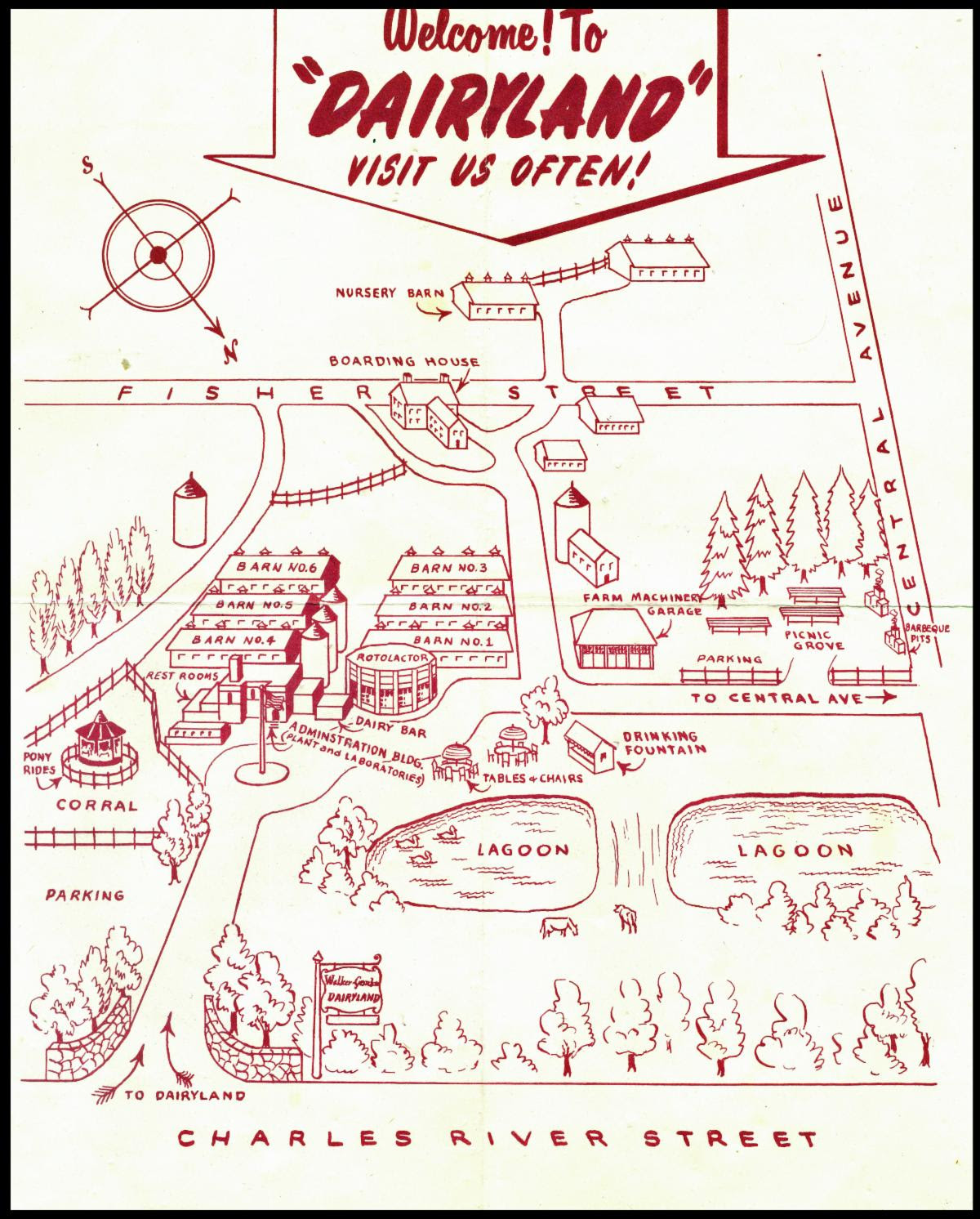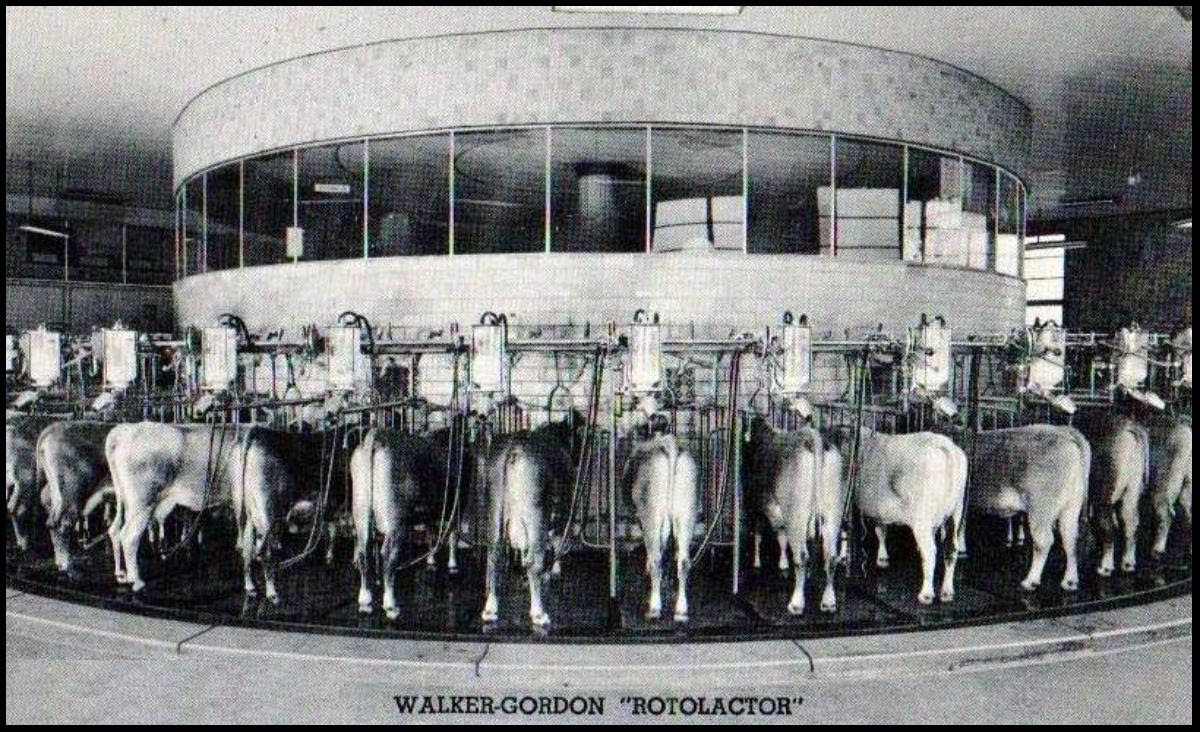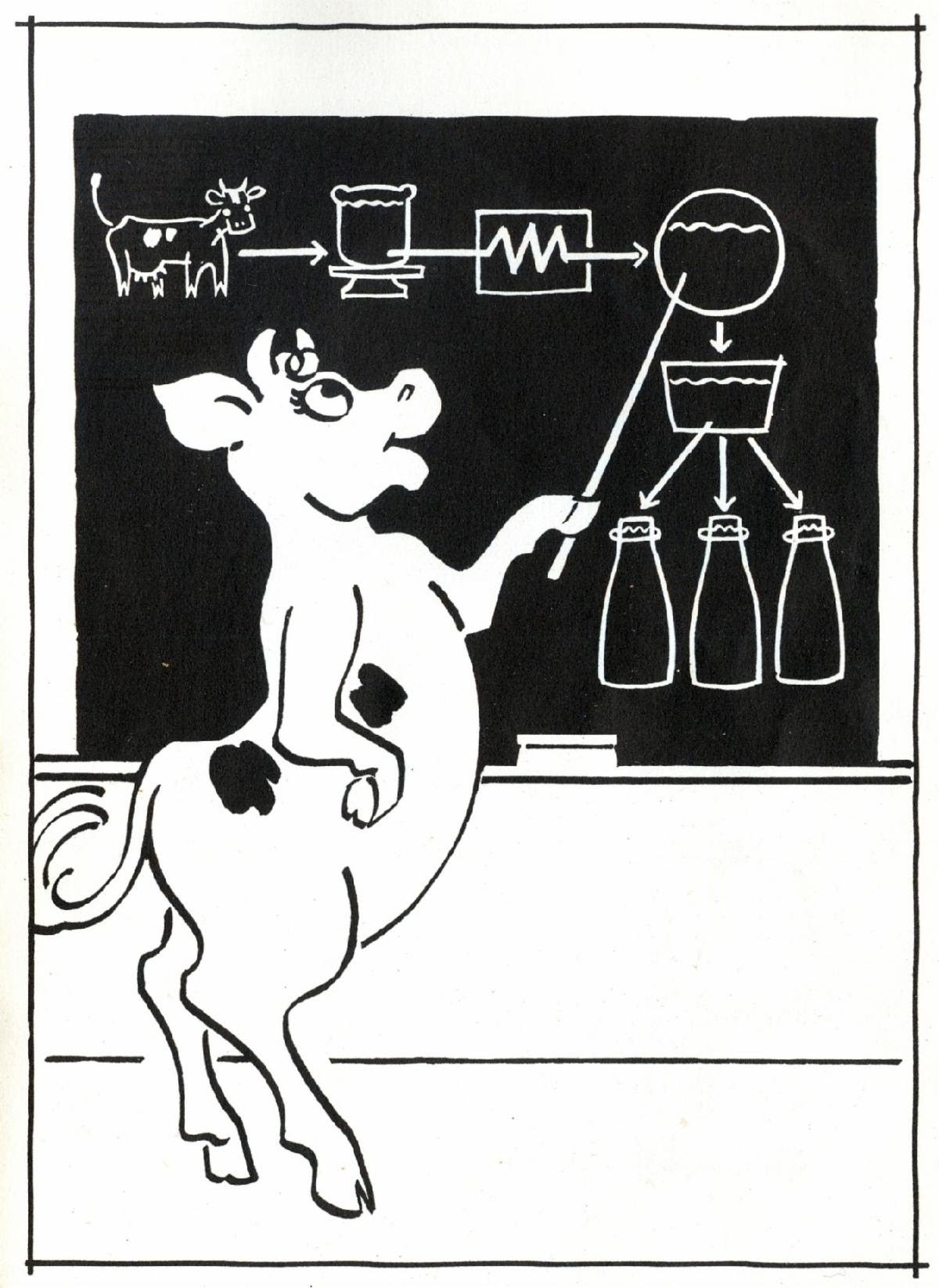
Needham History: Welcome to Dairyland!
““Untouched from Cow to Consumer!””

Welcome to Dairyland!
Boston in the 1800s was a reformer’s paradise. All of the major social reform movements – Temperance, Prison Reform, Abolition, Women’s Suffrage – had an advocate base in Boston. A common thread among many of these movements was no less a goal than the eradication of poverty, which was seen as the prime cause of crime, drunkenness and other social ills. One approach was to raise the standards of cleanliness, nutrition and public health.
The most innovative public health initiatives of the later 19th century sought to reduce the incidence of disease by addressing the sources of contagion, rather than trying to alleviate the symptoms once they emerged. This seems like common sense to us now, but in the days before germs and disease vectors were understood, it was more controversial. Among these efforts was the Pure Food movement, among whose goals was to eliminate contamination in both the manufactured and farmed food supply. It held that greater cleanliness at the site of production would result in a cleaner food supply overall. This in turn would reduce the incidence of parasitic disease and food-borne illnesses such as trichinosis and tuberculosis.
Needham has been able to play a role in these movements because it has always enjoyed easy access to the business and intellectual resources of the greater Boston area. In Colonial times, the Charles River provided a link between the towns. After 1850, rail lines built to carry Needham’s gravel to fill the Back Bay also provided a convenient commuter route for a rising professional class. The construction of Route 128, “America’s Technology Highway,” in the 1950s carried the intellectual capital of the universities out to the land-rich western suburbs, creating a hub of technological innovation that benefits us to this day.
One of the more important companies to arise out of this early reform movement was the Walker-Gordon Laboratories, and its famous Dairy. Founded in Boston in 1891, Walker-Gordon’s original product was not milk, but baby formula. Dr Thomas Rotch, pediatrician at the Harvard Medical School, determined that infant mortality could be greatly reduced by the scientific feeding of infants whose mothers were unable to produce sufficient milk. He turned to Gustavus Gordon, a scientist and reformer from Milwaukee, to develop a formula for modifying cow’s milk for infant nutrition. Gordon and his business partner, publisher George Walker of Boston, established the first of several Walker-Gordon Laboratories at 203 Clarendon Street in Boston.
From the first, the company’s main difficulty was obtaining milk of consistent quality and sufficient purity for infant use. Milk production and handling was not regulated, and much of the available milk was tainted with intestinal parasites or tuberculosis. In order to obtain clean milk, Walker-Gordon had to establish their own dairy farm. They first leased a portion of the Baker estate on Grove Street in Needham, and shortly thereafter purchased 8 acres on Central Avenue between what is now Charles River Street and Fisher Street. A few years later, they added more land on the Needham Peninsula, and a larger tract of land in Plainsboro, NJ. On their Needham farm, the 400 cattle were maintained in an entirely controlled environment and fed on specially-grown feed. The milk was tested daily for bacteria and pathogens. Both cattle and staff were give frequent medical checkups.
Walker-Gordon’s “Rotolactor” allowed for the efficient and sanitary handling of the milk supply, from teat to storage. By maintaining a closed system, the dairy could eliminate the sources of contamination and ensure the purity of their milk.
The company also developed technical innovations – such as the world-famous Rotolactor, that allowed them to increase production of milk without compromising their standards of purity. The Rotolactor was developed to speed up production and control costs while maintaining these standards. It was a completely hands-free milking system, a milking merry-go-round. The cows entered the Rotolactor and were thoroughly washed. After the teat cups were attached by a dairyman, the rest of the process was entirely automatic – milk was extracted, weighed and sent through a chilled tubing system to the processing and bottling facility without further contact with humans or air (“Milk Untouched by Hand from Cow to Consumer”). The cow and the milking stall were washed down, and the cow released to her stall for feeding.
The Rotolactor was developed at the Plainsboro farm in 1930. A smaller version was built and displayed at the New York World’s Fair in 1939. The World’s Fair machine was installed in the Needham farm in 1940, where it operated until 1960.
In addition to the milking operation, the both the Plainsboro and Needham farms were public attractions. Visitors were permitted limited access to the cow barns, and could view to Rotolactor four times daily. Kids loved to watch the Rotolactor, and sample the farms’ dairy products and ice cream at the Dairy Bar. Walker-Gordon’s specialty products, such as yogurt and Acidophilus Milk, were available to sample, and you could always take a quart of ice cream home when you left.
By the 1950s, however, business began to fall off. Federal regulation of milk standards had reduced the need for Walker-Gordon’s stringent (and costly) cleanliness practices. Home milk delivery, upon which Walker-Gordon depended, was not as convenient for housewives as the supermarket. By 1960, the Needham farm had been closed, and the land was sold. Part of the farm’s land was sold in part for residential development, and the rest as the campus of the Walker School. The Plainsboro farm was also sold, and the company closed its doors in 1971.
During its time in business, Walker-Gordon played a key role in raising the country’s standards for fresh milk production, and epitomized the American drive for innovation and improved health.
The Tale of a Very Proud Cow, Walker-Gordon Laboratories, c. 1950. This little booklet for kids told the story of Walker-Gordon’s innovative milk production from the point of view of one of its dairy cows.
 |
Gloria Polizzotti Greis is the Executive Director of the Needham History Center & Museum. For more information, please see their website at www.needhamhistory.org. |

